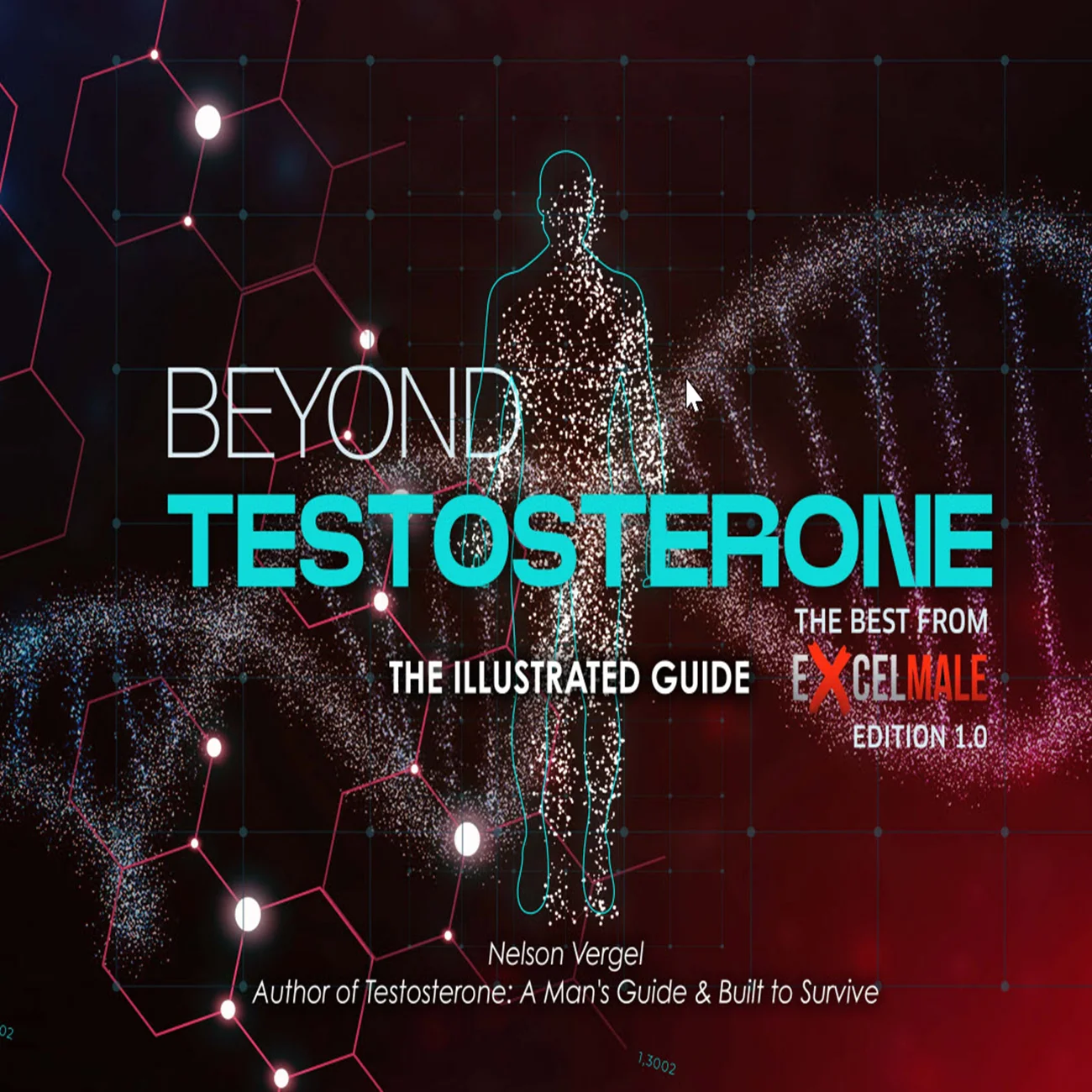Stem Cell Therapy for Erectile Dysfunction: Current Evidence and Future Directions
Erectile dysfunction (ED) is a prevalent condition affecting men worldwide, particularly those between the ages of 40 and 70. While conventional treatments such as phosphodiesterase type 5 inhibitors (PDE5is) are effective for many, a significant subset of patients—especially those with diabetes, post-prostatectomy, or vascular disease—remain unresponsive or experience only temporary relief. This has driven interest in regenerative therapies, most notably stem cell therapy, as a means to restore rather than merely manage erectile function[1][2][3].
What is Stem Cell Therapy for ED?
Stem cell therapy (SCT) involves the administration of stem cells—undifferentiated cells capable of self-renewal and differentiation—into the penile tissue to promote regeneration of damaged or diseased tissues. The goal is to restore erectile function by repairing the underlying vascular, neural, or smooth muscle deficits that contribute to ED[1][4][2].
Mechanisms of Action
The therapeutic effects of stem cell therapy in ED are believed to arise primarily from paracrine signaling—the release of growth factors and cytokines by stem cells that stimulate tissue repair, angiogenesis (formation of new blood vessels), anti-inflammatory effects, and neuroprotection. While early theories posited that stem cells would engraft and differentiate into local penile tissue, most evidence now points to these indirect, secretome-mediated effects as the principal drivers of benefit[1][4][2].
Key factors involved include:
Vascular endothelial growth factor (VEGF)
Brain-derived neurotrophic factor (BDNF)
Other cytokines and growth factors that promote tissue regeneration[2]
Types of Stem Cells Used
Several types of stem cells have been investigated for ED therapy:
Adipose-derived stem cells (ADSCs): Harvested from fat tissue, these are among the most studied and have shown promise in both animal models and early human trials[2][3].
Bone marrow-derived mesenchymal stem cells (BM-MSCs): Sourced from bone marrow, these cells have demonstrated safety and efficacy in early-phase clinical studies, particularly in men with ED following prostate surgery or diabetes[1][2].
Wharton’s Jelly-derived mesenchymal stem cells (WJ-MSCs): Obtained from umbilical cord tissue, these cells have been used in trials for diabetic ED[1][2].
Placental matrix-derived stem cells (PM-MSCs): Used in small-scale studies with reported improvements in erectile function[5].
Autologous stromal vascular fraction (SVF): A heterogeneous cell population from adipose tissue, including stem cells, used in some clinical trials[1].

Clinical Evidence: What Do the Studies Show?
Preclinical Studies
Animal studies since the early 2000s have consistently demonstrated that stem cell therapy can restore erectile function in models of ED caused by diabetes, nerve injury, aging, and other factors. These studies laid the groundwork for human trials[1][4][2].
Human Clinical Trials
Safety: Across published phase 1 and 2 trials, stem cell therapy for ED has demonstrated a favorable safety profile. Most adverse events are minor, such as mild pain or irritation at the injection site, with no reports of serious side effects or long-term complications[1][2][3].
Efficacy: Most published trials report significant improvements in erectile function, as measured by standardized questionnaires (e.g., International Index of Erectile Function [IIEF]) and objective tests (e.g., penile Doppler ultrasound). Improvements are seen in men with ED due to diabetes, post-prostatectomy, and vascular causes[1][5][2][3].
Durability: Some studies show that benefits can persist for up to a year, though there may be a gradual decline in effect over time, suggesting that repeated treatments could be necessary for sustained results[2].
Sample Size and Study Design: Most trials to date are small (fewer than 20 participants), non-randomized, and lack placebo controls. Larger, well-controlled studies are needed to confirm these findings and establish optimal protocols[5][3].
Limitations and Future Directions
Despite promising early results, stem cell therapy for ED remains experimental. Key limitations include:
Small sample sizes and lack of placebo-controlled, blinded studies[5][3]
Uncertainty regarding the optimal type, dose, and delivery method of stem cells
Long-term safety and efficacy data are limited
Future research should focus on:
Large-scale, randomized controlled trials
Standardization of cell preparation and administration protocols
Combination therapies (e.g., stem cells with platelet-rich plasma or shockwave therapy) to enhance outcomes[1][2]
Conclusion
Stem cell therapy represents a novel and potentially transformative approach to treating erectile dysfunction, aiming to restore natural erectile function by regenerating penile tissue. Early clinical studies indicate that it is safe and can improve erectile function in men with otherwise treatment-resistant ED. However, robust evidence from large, controlled trials is still needed before this therapy can be widely recommended outside of research settings[1][2][3].
“The use of stem cells for the treatment of ED represents an exciting new field, which still requires extensive basic research and human trials in diverse ED patient populations in order to define its role in the treatment of ED.”[4]
References
Recent advances in stem cell therapy for erectile dysfunction: a narrative review - PMC
Frontiers | Advances in stem cell therapy for erectile dysfunction: preclinical evidence and emerging therapeutic approaches
Stem-cell therapy for erectile dysfunction: a review of clinical outcomes - International Journal of Impotence Research
https://pure.johnshopkins.edu/en/pu...r-erectile-dysfunction-progress-and-future-di
Stem cell therapy and diabetic erectile dysfunction: A critical review
Abstract
Erectile dysfunction (ED) is a common clinical condition that mainly affects men aged over 40 years. Various causes contribute to the progression of ED, including pelvic nerve injury, diabetes, metabolic syndrome, age, Peyronie’s disease, smoking,and psychological disorders. Current treatments for ED are limited to symptom relief and do not address the root cause. Stem cells, with their powerful ability to proliferate and differentiate, are a promising approach for the treatment of male ED and are gradually gaining widespread attention. Current uses for treating ED have been studied primarily in experimental animals,with most studies observing improvements in erectile quality as well as improvements in erectile tissue. However, research on stem cell therapy for human ED is still limited. This article summarizes the recent literature on basic stem cell research on ED, including cavernous nerve injury, aging, diabetes, and sclerosing penile disease, and describes mechanisms of action and therapeutic effects of various stem cell therapies in experimental animals. Stem cells are also believed to interact with host tissue in a paracrine manner, and improved function can be supported through both implantation and paracrine factors. To date, stem cells have shown some preliminary promising results in animal and human models of ED.
2 Stem Cells in the Treatment of ED Resulting from Cavernous Nerve Injury
3 Stem Cells in the ED of Diabetes and Metabolic Syndrome
4 Stem Cells in Aging‑Associated ED
5 Stem Cells in the ED of Peyronie’s Disease and Corpus Cavernous Injury
6 Stem Cell Applications in Human Clinical Trials
7 Conclusions
Stem cell therapy is potentially safe and effective in the treatment of ED and remains a promising area of research. Significant results have been achieved through numerous preclinical studies, with stem cells improving erectile function by differentiating into neural cells, smooth muscle cells,and endothelial cells on the one hand, and enhancing erec‑tile function by promoting angiogenesis and anti-fibrosis and anti-apoptosis through paracrine effects on the other hand.
However, stem cells still have many unresolved challenges in the treatment of ED. The relevant mechanisms in humans have not yet been fully elucidated, and the future direction of cell therapy still requires large-scale human studies. Meanwhile, many issues must still be resolved to achieve the safety, efficacy, and specific mechanisms of action of stem cells in treatment. Previous studies have reported that MSC can penetrate into prostate cancer cells, including prostate tissue to promote tumorigenesis and progression [93]. It is also meaningful to explore the origin of stem cells. Current research has found that both autologous and exogenous stem cells can improve erectile function, but the choice is worth exploring. Autologous stem cells are easy to obtain and safe, and can overcome the antigenicity problem of cell transplantation. Recently, it was found that allogeneic transplantation of ADSC secreted cytokines to regulate T cell and natural killer cells, thus avoiding immune rejection [12]. Autologous transplantation is not indicated in elderly patients and those with cancer [94]. These unresolved issues may include determining the optimal treatment protocol to address the immunogenicity and heterogeneity of stem cells, and evaluating the high cost and low efficiency of their application. Other issues may include small sample sizes, lack of blinding, and so on. Secondly, the types of stem cells, injectable doses, duration of treatment, and end‑points for evaluation of therapeutic effects have not yet been determined, coupled with ethical, legal, and social issues affecting the widespread use of stem cell therapy.
We believe that in the near future, more phase II and phase III clinical trials will be conducted to generate a high level of evidence, further clarify the specific mechanism of action, reduce the drawbacks of high cost and inefficiency,and fully prepare for the translation of stem cell therapy for ED from preclinical studies to clinical application.
Erectile dysfunction (ED) is a prevalent condition affecting men worldwide, particularly those between the ages of 40 and 70. While conventional treatments such as phosphodiesterase type 5 inhibitors (PDE5is) are effective for many, a significant subset of patients—especially those with diabetes, post-prostatectomy, or vascular disease—remain unresponsive or experience only temporary relief. This has driven interest in regenerative therapies, most notably stem cell therapy, as a means to restore rather than merely manage erectile function[1][2][3].
What is Stem Cell Therapy for ED?
Stem cell therapy (SCT) involves the administration of stem cells—undifferentiated cells capable of self-renewal and differentiation—into the penile tissue to promote regeneration of damaged or diseased tissues. The goal is to restore erectile function by repairing the underlying vascular, neural, or smooth muscle deficits that contribute to ED[1][4][2].
Mechanisms of Action
The therapeutic effects of stem cell therapy in ED are believed to arise primarily from paracrine signaling—the release of growth factors and cytokines by stem cells that stimulate tissue repair, angiogenesis (formation of new blood vessels), anti-inflammatory effects, and neuroprotection. While early theories posited that stem cells would engraft and differentiate into local penile tissue, most evidence now points to these indirect, secretome-mediated effects as the principal drivers of benefit[1][4][2].
Key factors involved include:
Vascular endothelial growth factor (VEGF)
Brain-derived neurotrophic factor (BDNF)
Other cytokines and growth factors that promote tissue regeneration[2]
Types of Stem Cells Used
Several types of stem cells have been investigated for ED therapy:
Adipose-derived stem cells (ADSCs): Harvested from fat tissue, these are among the most studied and have shown promise in both animal models and early human trials[2][3].
Bone marrow-derived mesenchymal stem cells (BM-MSCs): Sourced from bone marrow, these cells have demonstrated safety and efficacy in early-phase clinical studies, particularly in men with ED following prostate surgery or diabetes[1][2].
Wharton’s Jelly-derived mesenchymal stem cells (WJ-MSCs): Obtained from umbilical cord tissue, these cells have been used in trials for diabetic ED[1][2].
Placental matrix-derived stem cells (PM-MSCs): Used in small-scale studies with reported improvements in erectile function[5].
Autologous stromal vascular fraction (SVF): A heterogeneous cell population from adipose tissue, including stem cells, used in some clinical trials[1].
Clinical Evidence: What Do the Studies Show?
Preclinical Studies
Animal studies since the early 2000s have consistently demonstrated that stem cell therapy can restore erectile function in models of ED caused by diabetes, nerve injury, aging, and other factors. These studies laid the groundwork for human trials[1][4][2].
Human Clinical Trials
Safety: Across published phase 1 and 2 trials, stem cell therapy for ED has demonstrated a favorable safety profile. Most adverse events are minor, such as mild pain or irritation at the injection site, with no reports of serious side effects or long-term complications[1][2][3].
Efficacy: Most published trials report significant improvements in erectile function, as measured by standardized questionnaires (e.g., International Index of Erectile Function [IIEF]) and objective tests (e.g., penile Doppler ultrasound). Improvements are seen in men with ED due to diabetes, post-prostatectomy, and vascular causes[1][5][2][3].
Durability: Some studies show that benefits can persist for up to a year, though there may be a gradual decline in effect over time, suggesting that repeated treatments could be necessary for sustained results[2].
Sample Size and Study Design: Most trials to date are small (fewer than 20 participants), non-randomized, and lack placebo controls. Larger, well-controlled studies are needed to confirm these findings and establish optimal protocols[5][3].
Limitations and Future Directions
Despite promising early results, stem cell therapy for ED remains experimental. Key limitations include:
Small sample sizes and lack of placebo-controlled, blinded studies[5][3]
Uncertainty regarding the optimal type, dose, and delivery method of stem cells
Long-term safety and efficacy data are limited
Future research should focus on:
Large-scale, randomized controlled trials
Standardization of cell preparation and administration protocols
Combination therapies (e.g., stem cells with platelet-rich plasma or shockwave therapy) to enhance outcomes[1][2]
Conclusion
Stem cell therapy represents a novel and potentially transformative approach to treating erectile dysfunction, aiming to restore natural erectile function by regenerating penile tissue. Early clinical studies indicate that it is safe and can improve erectile function in men with otherwise treatment-resistant ED. However, robust evidence from large, controlled trials is still needed before this therapy can be widely recommended outside of research settings[1][2][3].
“The use of stem cells for the treatment of ED represents an exciting new field, which still requires extensive basic research and human trials in diverse ED patient populations in order to define its role in the treatment of ED.”[4]
References
Recent advances in stem cell therapy for erectile dysfunction: a narrative review - PMC
Frontiers | Advances in stem cell therapy for erectile dysfunction: preclinical evidence and emerging therapeutic approaches
Stem-cell therapy for erectile dysfunction: a review of clinical outcomes - International Journal of Impotence Research
https://pure.johnshopkins.edu/en/pu...r-erectile-dysfunction-progress-and-future-di
Stem cell therapy and diabetic erectile dysfunction: A critical review
Abstract
Erectile dysfunction (ED) is a common clinical condition that mainly affects men aged over 40 years. Various causes contribute to the progression of ED, including pelvic nerve injury, diabetes, metabolic syndrome, age, Peyronie’s disease, smoking,and psychological disorders. Current treatments for ED are limited to symptom relief and do not address the root cause. Stem cells, with their powerful ability to proliferate and differentiate, are a promising approach for the treatment of male ED and are gradually gaining widespread attention. Current uses for treating ED have been studied primarily in experimental animals,with most studies observing improvements in erectile quality as well as improvements in erectile tissue. However, research on stem cell therapy for human ED is still limited. This article summarizes the recent literature on basic stem cell research on ED, including cavernous nerve injury, aging, diabetes, and sclerosing penile disease, and describes mechanisms of action and therapeutic effects of various stem cell therapies in experimental animals. Stem cells are also believed to interact with host tissue in a paracrine manner, and improved function can be supported through both implantation and paracrine factors. To date, stem cells have shown some preliminary promising results in animal and human models of ED.
2 Stem Cells in the Treatment of ED Resulting from Cavernous Nerve Injury
3 Stem Cells in the ED of Diabetes and Metabolic Syndrome
4 Stem Cells in Aging‑Associated ED
5 Stem Cells in the ED of Peyronie’s Disease and Corpus Cavernous Injury
6 Stem Cell Applications in Human Clinical Trials
7 Conclusions
Stem cell therapy is potentially safe and effective in the treatment of ED and remains a promising area of research. Significant results have been achieved through numerous preclinical studies, with stem cells improving erectile function by differentiating into neural cells, smooth muscle cells,and endothelial cells on the one hand, and enhancing erec‑tile function by promoting angiogenesis and anti-fibrosis and anti-apoptosis through paracrine effects on the other hand.
However, stem cells still have many unresolved challenges in the treatment of ED. The relevant mechanisms in humans have not yet been fully elucidated, and the future direction of cell therapy still requires large-scale human studies. Meanwhile, many issues must still be resolved to achieve the safety, efficacy, and specific mechanisms of action of stem cells in treatment. Previous studies have reported that MSC can penetrate into prostate cancer cells, including prostate tissue to promote tumorigenesis and progression [93]. It is also meaningful to explore the origin of stem cells. Current research has found that both autologous and exogenous stem cells can improve erectile function, but the choice is worth exploring. Autologous stem cells are easy to obtain and safe, and can overcome the antigenicity problem of cell transplantation. Recently, it was found that allogeneic transplantation of ADSC secreted cytokines to regulate T cell and natural killer cells, thus avoiding immune rejection [12]. Autologous transplantation is not indicated in elderly patients and those with cancer [94]. These unresolved issues may include determining the optimal treatment protocol to address the immunogenicity and heterogeneity of stem cells, and evaluating the high cost and low efficiency of their application. Other issues may include small sample sizes, lack of blinding, and so on. Secondly, the types of stem cells, injectable doses, duration of treatment, and end‑points for evaluation of therapeutic effects have not yet been determined, coupled with ethical, legal, and social issues affecting the widespread use of stem cell therapy.
We believe that in the near future, more phase II and phase III clinical trials will be conducted to generate a high level of evidence, further clarify the specific mechanism of action, reduce the drawbacks of high cost and inefficiency,and fully prepare for the translation of stem cell therapy for ED from preclinical studies to clinical application.
Last edited by a moderator:












